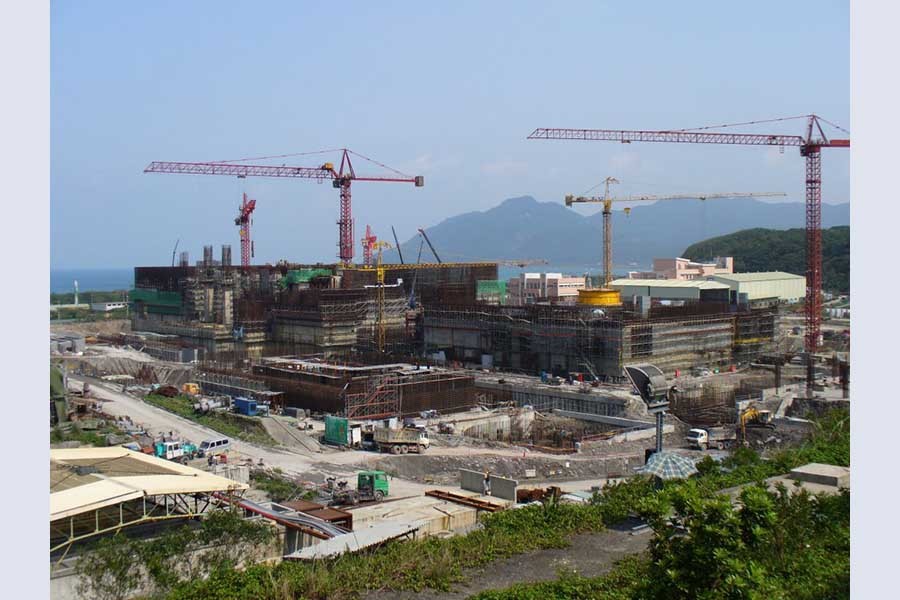
Published :
Updated :

The government has taken a laudable initiative to set up 100 economic zones (EZs) in the country. The move, if implemented, could see Bangladesh reach a phenomenal level of industrialisation and development. Establishing 100 economic zones at a time is, however, doubtlessly a Herculean job as the country lags seriously behind in infrastructures and skilled manpower needed to get those going. On the other hand, all industries to be located in such zones need to be skill-specific. Is Bangladesh prepared to meet the needs of EZs.
The Prime Minister, who pursues the programme of economic zones keeping in view the fast depletion of fertile agricultural lands in Bangladesh, has, however, given a sense of direction to the Bangladesh Economic Zones Authority (BEZA) in this regard. She stressed the need for taking into consideration potentiality of various regions. Industries, particularly small and medium ones, will have to be established on the basis of availability of resources in the concerned regions. The issue of communication system in those areas will also have to be taken into consideration, she said.
Now BEZA, in close consultations with the prospective investors, should immediately carry out a survey of manpower needs of industries to be located in the economic zones. This will facilitate skill training of hundreds of thousands of the country's youths for their jobs. The existing training institutes must be equipped enough to provide the required training so that these industries finally could phase out foreign technicians and workers from the economic zones paving the way for their replacement with their Bangladeshi counterparts.
Some experts, however, are sceptical about the need for 100 economic zones in the country, citing the shortage of land as a major hindrance. If five or six EZs could be successfully operationalised within the next three or four years, other zones would also see gradual rollout. There must be a land bank for the economic zones to address the land-shortage issue. Already seven of the economic zones are totally booked, which would attract investment worth US$ 1.4 billion. Currently, there are huge fallow lands in the southern region of the country which can offer sites for development of future economic zones.
The BEZA should also take stock of some serious impediments EZ entrepreneurs will face. The 45th largest economy in the world has one of the worst logistics and transport services in the region. It still does not have a modern multimodal transport system to speak of, as a result of which local exports are losing competitiveness in the global market. Besides, our ports, road, rail and air services are still to become at par with their Asian Tiger counterparts.
There has been no marked improvement in the container handling capacity of the Chittagong Port. Highways connecting the capital with the port city have not yet been upgraded to handle huge cargo movement after the economic zones go into full operation. In fact, Bangladesh's transportation system needs to go through an overhaul. Gridlock on the highways bleeds the country's economy, and bringing about a sustainable solution to the menace is the order of the day. Barge services between Chittagong and the EZs can be a good beginning. It is essential to improve ports, road, rail, and air services. Private sector, which is ready to invest in transport infrastructure and trade logistics, should be encouraged to team up with the government.
A recent study of the Access to Information (a2i) programme found that industries in EZs across the country will require about 2,60,000 junior, about 7,03,000 mid-level and 4,65,000 senior employees in the next five years. "Considering the fact, it is forecast that the industries will face problems to recruit about 22,33,000 junior, about 628,000 mid-level and 400,000 senior employees due to lack of training," said the study titled "A Journey Towards Development Country: Sustainable Employment Opportunities and Skills Demand in Economic Zones". It observed that to overcome the challenges, about 24 training centres will be required for employees of the industries.
"Among these training centres, 22 centres are needed for developing junior level of employees, one training centre for mid-level and senior level each. These training centres can develop around 24,000 skilled employees per year," the study said.
The BEZA and a2i unveiled the result of the study at a function at the Prime Minister's Office (PMO).
Now it is time for developing technical education across the country through popularising and modernising the polytechnic institutes for meeting the demand for skilled manpower. The study suggested that BEZA took initiatives to improve procuring, preparing, repairing, maintaining, marketing and exporting capabilities of the industries and claimed it is possible by developing skills on a regular basis.
The study suggested that the government made easy the land acquisition process and industrial loan process and enhanced institutional capacity of specialised training centres as most of the industries prefer recruiting trained employees.
"The national and international investors will be motivated to invest in EZs if they find suitable places and lands to invest in the EZs across the country," the study observed.
The government should apply the laws strictly to have the effluent treatment plant (ETP) for industries to avoid the negative impacts on water, environment and ecology during production. It should also enhance its institutional capacity in order to support industries by providing technical backing for testifying the standard of products, the study said. Sufficient financial support by the banks could be ensured, it added.


 For all latest news, follow The Financial Express Google News channel.
For all latest news, follow The Financial Express Google News channel.